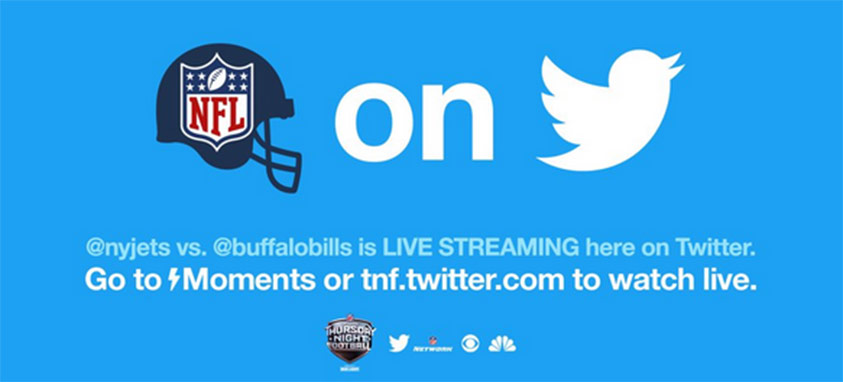Twitter CEO Jack Dorsey has a massive goal in his sights, and he hopes live event streaming is going to play a major role in conquering it.
With Facebook, Instagram, Snapchat and others fighting for the attention of their users, Twitter is looking for creative ways not only to keep up, but to become the first billion-user internet service. (They’re currently at about 313 million).
Though often compared to other social networking platforms, Twitter hopes to emphasize its position as a news and media resource, which is why the company has made a high-profile investment in live-streaming NFL programming.
On April 5, NFL commissioner Roger Goodell announced, via his first tweet in 19 months, that Twitter had won the rights to stream 10 Thursday Night Football games for the upcoming season.
This fall Thursday Night Football will be streamed live @twitter so fans will see more of this. https://t.co/s6tbr9FjvY
— Roger Goodell (@nflcommish) April 5, 2016
Of course, that’s not the first investment Twitter has made to up its video streaming reputation. In 2012, the company acquired Vine, which—until recently—produced six-second-long video clips. Then in 2015, Twitter purchased Periscope, which allows users to broadcast high-quality live videos of any length from a smartphone in real time and within tweets.
“We really ended up with Twitter because we thought it gave us a great opportunity for incremental audience reach and mobile reach,” Brian Rolapp, executive vice president of media for the NFL, told Fast Company. “We have data that says 7 of 10 of our fans have a second screen open [while watching games]. They’re texting, they’re playing fantasy, they’re on Twitter.”
Over the summer, Twitter streamed other highly public events, including Wimbledon, the Republican and Democratic conventions, and red carpet blockbuster premieres.
How does this affect other events such as trade shows? First, it’s making engaging content more accessible and easier to engage with. But more importantly, it’s easy to pick up. Users don’t have to worry about who to follow or tag, what hashtags to use, or even log in to an account to enjoy the content, making it easy for non-Twitter users to hop on board in a snap.
Twitter’s live video streaming capabilities are always a work in progress. In June, it paid a reported $150 million to acquire Magic Pony Technology, an London-based startup with algorithms that Twitter plans to adopt for both Periscope and major-event video streams that analyze imagery to improve how a video looks even when a user has spotty network connection.
Watch key broadcast moments you’ve missed with Replay Highlights – now available on iOS and Android! ?? pic.twitter.com/GMKUbU1aw2
— Periscope (@periscopeco) July 21, 2016
Twitter is seeking to break away from the Facebooks and Snapchats to be seen for what it really is: a place where news is being discussed, watched and shared in real time. So while Facebook Live is getting a lot of attention since it’s recent roll-out, it’s not the only solution event professionals should be considering to promote and broadcast their events.




